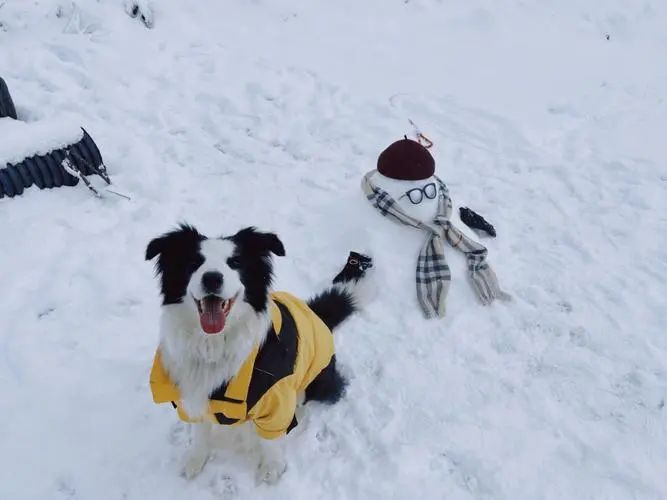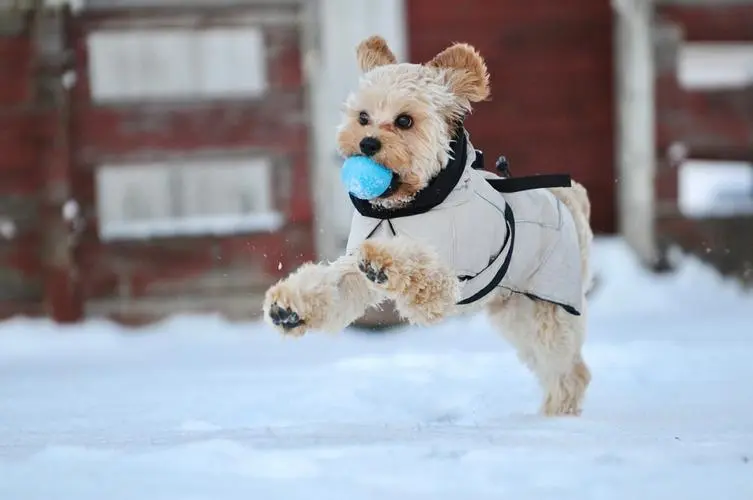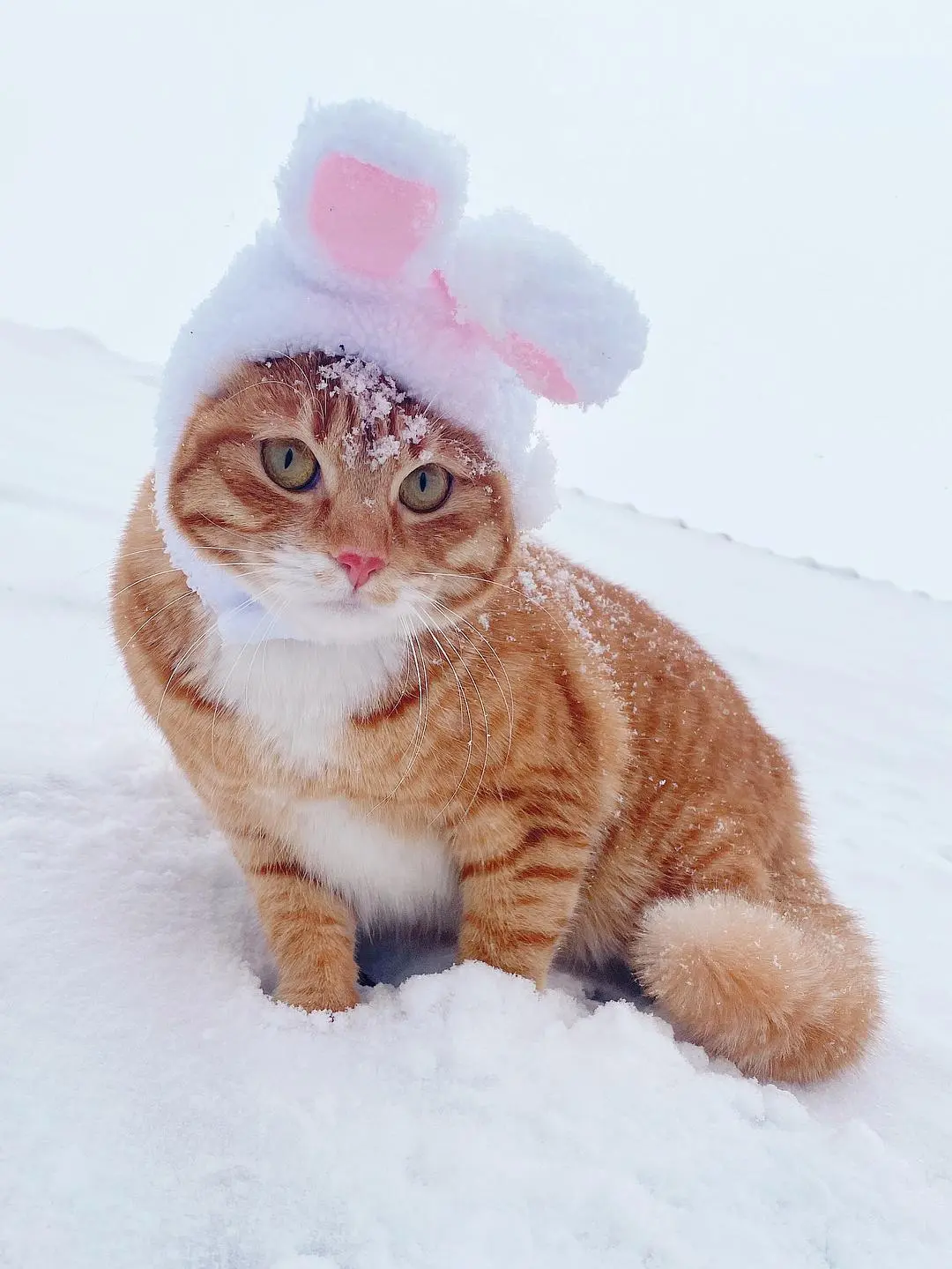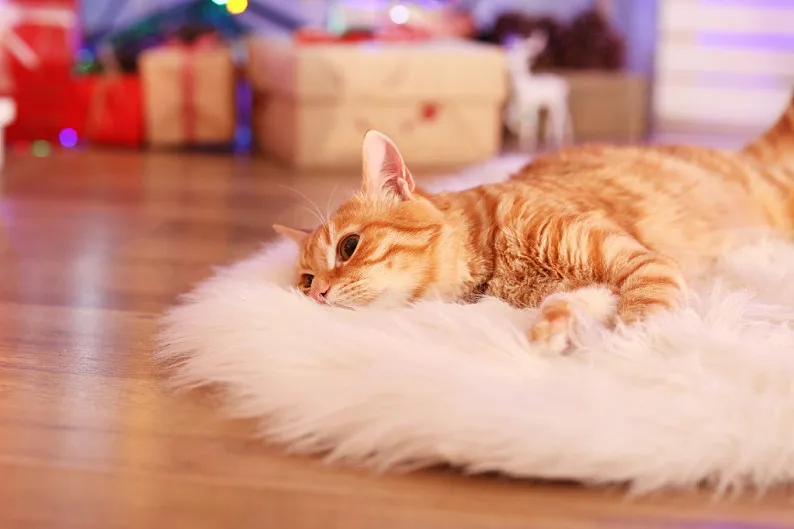The temperature has dropped. How do you know if your pets are cold?
The temperature has dropped. How do you know if your pets are cold?
Different owners have different ideas about whether to put clothes on dogs when the temperature drops. Some owners think that dogs’ coats are natural clothes and there is no need to dress them deliberately, but some owners think that dogs are afraid of cold just like humans.
So do dogs show when they’re cold?
What about the cat? Is it cold?
How do we know if they are cold?

What dogs do when they are cold
Curling up: When dogs feel cold, they will try to reduce their body surface area to reduce heat loss. They may curl up into a ball and try to tuck their tails in. This posture helps the dog warm itself with body heat.
Shivering: When dogs feel cold, their bodies will shiver involuntarily. This is a natural reaction of dogs to generate heat through rapid muscle contraction and relaxation to maintain body temperature. Some dogs may also tuck their tails into their bodies while shivering to further reduce body heat loss.
Cold ears and body: Normally, a dog's body and ears are warm. But if a dog feels cold, their ears and body may become cold. Especially when you touch a part of the dog's body without fur, if it feels cold, then the dog is likely to have hypothermia and needs to be kept warm in time.
Reduced activity: The cold may make dogs less active. They may choose to curl up in a corner and reduce their energy consumption to maintain their body temperature. When walking, dogs may also appear listless and always stay close to their owners or hide behind their owners' feet to avoid the cold wind.
Whining: If your dog is distressed or upset by the cold, they may whimper to get their owner's attention. This sound usually means they need more attention and warmth.
Limping or limping: In cold weather, your dog's paws may become uncomfortable with the direct contact of cold ground. Therefore, your dog may appear to limp or limp when walking, as they are trying to avoid direct contact of their paws with the cold ground.
Increased sleep: Although dogs need to sleep a certain amount of time every day, they may sleep more in cold weather. This is because sleep helps reduce physical energy consumption and thus maintain body temperature. If your dog does not get up to eat at mealtime, or even refuses to move when you call, it may be because it is too cold to move.

Owners should pay attention to
When the owner determines that the dog feels cold, please take the dog home quickly or go indoors nearby.
In winter, it is not advisable to walk the dog outdoors for too long, and the dog should not do activities with high intensity of exercise.
When walking your dog on a snowy day, be extra careful not to let the dog eat snow. When you get home, wash the dog's feet immediately.
Every dog has a different physique. Some dogs are naturally weak and afraid of the cold, and are prone to illness, so owners should pay more attention to keeping them warm in the cold winter and wear clothes when going out.
When they sleep at home, try not to let them sleep directly on the floor. You can prepare a mat for them, and it is also a good choice to spread unwanted clothes on the floor. (Please note that tearing clothes is not allowed, as it is easy to eat cotton)
When the dog feels cold at home, you need to adjust the indoor temperature and keep it at around 22 degrees. At the same time, be careful not to over-warm the dog to prevent it from feeling uncomfortable or causing other health problems.

When cats feel cold, they also express their discomfort through a series of behaviors and physical signs, some of which are similar to those of dogs.

What cats do when they are cold
Curling up: Like dogs, cats will try to shrink their bodies in cold environments to reduce heat loss. They may curl up into a small ball, trying to keep all parts of their body close to the center to maintain body temperature.
Seeking warm places: Cats will seek out warm places to stay warm, such as near a heater, electric blanket, sunny windowsill, or your bed. If you find your cat often hiding in these places, then it may be feeling cold.
Shivering: When cats are cold, they will shiver. This is their natural reaction of rapidly contracting and relaxing muscles to generate heat.
Changes in voice: Some cats may make weaker calls or their calls become deeper when they are cold, which may be their way of seeking help or expressing discomfort.
Reluctance to move: The cold can make cats lazy and reluctant to move. They may lie in one place all day, unwilling to play or explore.
Dropped skin temperature: You can tell if your cat is feeling cold by touching his skin. If your cat's skin feels cool, then he may be feeling cold.
Decreased Appetite: In cold environments, your cat’s appetite may be affected and they may eat less than usual.

Owners should pay attention to
If you notice your cat exhibiting the above symptoms, you should take immediate steps to help them stay warm. You can prepare some warm mats or beds for your cat, thicken their beds, or adjust the indoor temperature. At the same time, be careful not to over-warm your cat, as this may cause discomfort or other health problems.
If your cat's temperature continues to drop or he or she shows other abnormal symptoms, such as rapid breathing or lethargy, you should take him or her to see a veterinarian immediately.
Contact :Aine Fan
Shandong Lize Pet Products Co.,Ltd
TEL: +86 18553707508 WeChat: +86 18553707508 WhatsApp: +86 18553707508
Email:fanmingyue@lizechong.com ainefan@qq.com
ADD:Xiaomeng Town Industrial Park, Yanzhou District,Jining, Shandong
